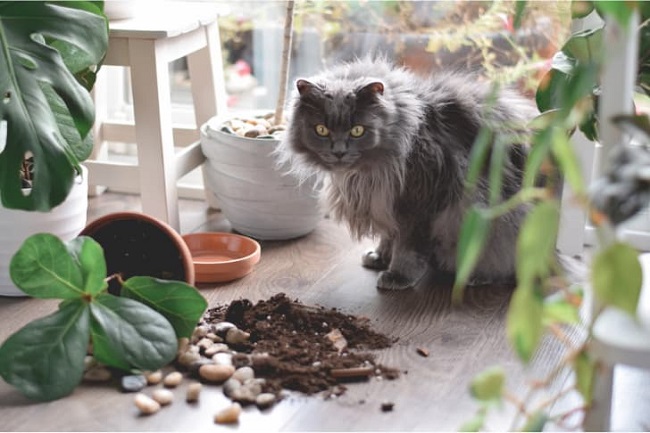The Fiddle Leaf Fig, known scientifically as Ficus lyrata, is a popular houseplant cherished for its unique, broad leaves that add a touch of nature to any interior space. However, cat owners may find themselves asking, “Is the Fiddle Leaf Fig Toxic to Cats?”
The answer is yes, Fiddle Leaf Figs do contain toxins that can cause health issues in cats. In this comprehensive guide, we’ll explore the extent of this toxicity and provide advice on how to keep your feline friends safe.

Fiddle Leaf Fig: A Brief Overview
Native to Western Africa, the Fiddle Leaf Fig gets its name from its large, fiddle-shaped leaves. These plants are quite hardy and can grow up to six feet tall indoors, making them a bold addition to any room.
Read Also:
Toxic Components of the Fiddle Leaf Fig
The Fiddle Leaf Fig, like many other plants in the Ficus family, contains a toxic, milky sap called latex. This latex is found throughout the plant, including in its leaves and stem.
How Fiddle Leaf Fig Affects Cats
When a cat ingests or comes into contact with the sap from a Fiddle Leaf Fig, it can cause a variety of symptoms. These reactions are due to the sap’s calcium oxalate crystals, which can irritate the skin, mouth, tongue, and throat.
Symptoms of Fiddle Leaf Fig Poisoning in Cats
If your cat has nibbled on a Fiddle Leaf Fig, it may exhibit symptoms like drooling, vomiting, decreased appetite, and irritation around the mouth. In more serious cases, it might have difficulty swallowing or experience an increase in urination.
What To Do If Your Cat Ingests Fiddle Leaf Fig
If you suspect your cat has ingested part of a Fiddle Leaf Fig, contact your vet immediately. They may instruct you to monitor your cat’s symptoms, induce vomiting, or bring your cat in for treatment.
Keeping Your Cat Safe From Fiddle Leaf Fig
The best way to protect your cat from the toxic effects of a Fiddle Leaf Fig is to keep the plant out of your cat’s reach or avoid having the plant in your home entirely.
If you decide to keep the plant, ensure it is in a place inaccessible to your cat, and regularly check for fallen leaves that your cat might find.
Prevention is Better than Cure
When it comes to preventing any unfortunate incidents, it’s better to err on the side of caution. Even though it may be tempting to adorn your living space with a Fiddle Leaf Fig, consider opting for cat-friendly alternatives like spider plants or Boston ferns. These plants provide a similar aesthetic without posing a risk to your furry friends.
Regular Health Checks are Vital
Remember that regular health checks are crucial in ensuring your cat’s well-being. Routine vet visits can help you catch any potential health issues early on, including those that could be caused by exposure to toxic plants.
Watch Out for Unusual Behaviors
As a cat owner, it’s important to stay observant of any changes in your cat’s behavior. Any signs of discomfort or a sudden change in their eating habits could be a warning sign of potential Fiddle Leaf Fig ingestion.
Training Your Cat
Believe it or not, you can train cats to avoid certain areas or items in your home. With a bit of patience and consistency, you can teach your feline friend to stay away from your Fiddle Leaf Fig or any other houseplants.
Read Also:
Conclusion
While the Fiddle Leaf Fig is indeed a sight to behold, it can pose a danger to your feline friends. As pet owners, it’s crucial to balance our love for greenery with the safety of our beloved pets.
Knowledge about potential hazards, prompt reaction to poisoning symptoms, and preventive measures can go a long way in maintaining a safe, pet-friendly environment.
























